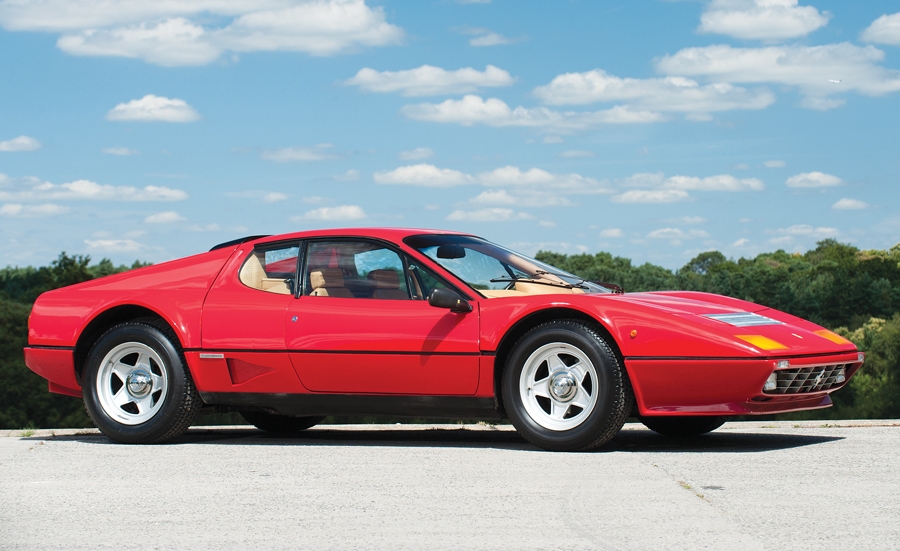Chassis Number: ZFFJA09B000049533
When introduced at the 1981 Frankfurt Salon, the 512 BBi brought about only minor changes from the outgoing 512 BB, with the chief among those being the addition of a Bosch K-Jetronic fuel-injection system. The BBi retained all of the 512 BB’s looks and character — but added exposed driving lights on the nose and rectangular parking lights adjacent to the exhausts at the rear. For many clients, the addition of the fuel injection was a welcome change, and the 512 BBi is often considered to be the most livable of Ferrari’s Berlinetta Boxer models.
Naturally, performance remained incredible over the outgoing carbureted 512. The fuel-injected engine of the 512 BBi brought about an additional 20 foot-pounds of torque over its carbureted predecessor, and the powerplant proved to be much more tractable overall. A sprint from 0 to 60 mph would take just 5.4 seconds, and the 512 BBi topped out at 174 mph. By 1984, the 512 BBi’s final year of production before it was replaced by the Testarossa, 1,007 examples had been produced.
This 512 BBi is being offered from a Swiss collection, and it is in absolutely impeccable condition, as it has traveled less than 11,500 miles from new. The paintwork is truly brilliant, and stepping inside shows that the interior is also in exceptional condition. It is important to note that the car is also accompanied by a full set of books and manuals, a tool roll, and a spare wheel and tire.
This particular BBi was produced in the final year of production for the 512 BBi, and it is undoubtedly one of the finest examples in existence. It would surely stand out in any collection.

